Common weeds often invade even the most highly maintained lawns. Seeds are spread by the wind and weeds you thought you’d completely gotten rid of quietly growing back, claiming further territory.
How comfortably your lawn stands up to a weed attack depends on your lawn’s general health, the weeds involved, and the eradication method you choose. Understanding the most common lawn weeds as well as the methods available to deal with them may help you successfully tackle any onslaught.
To help you control lawn weeds, we’ve put together this guide for you. Here, you’ll learn about the main types of lawn weeds that exist and their characteristics, the most common lawn weeds, and, of course, ways to get rid of lawn weeds and keep them off your yard.
Lawn Weed Categories
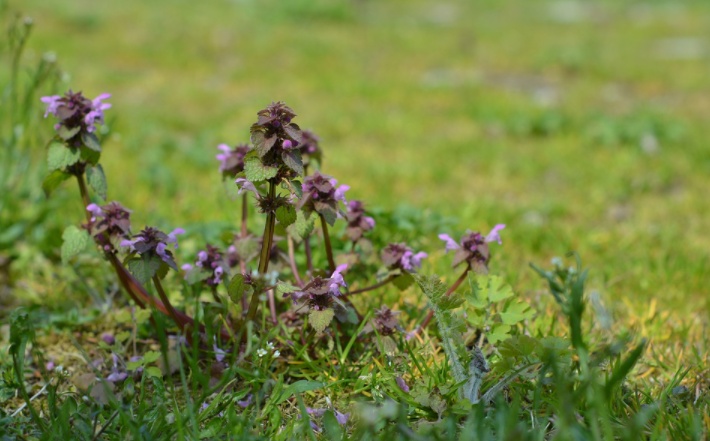
A weed is basically a plant that’s growing in the wrong place, i.e. where it’s not needed. There are three broad categories of lawn weeds: grassy, grass-like, or broadleaf.
Grassy Weeds
Grassy weeds resemble grass because they grow and look like grass. Leaves resemble grass blades. Examples include:
- Crabgrass
- Quackgrass
- Annual bluegrass
- Foxtail
Grass-like Weeds
While grass-like weeds resemble grass in terms of appearance, their leaves may be tube-like and hollow or triangular, instead of flat like a blade of grass.
Examples include:
- Wild garlic
- Wild onion
- Nutsedge
Broadleaf Weeds
Broadleaf weeds have broad, flat leaves (not needle-like or grassy).
Examples include:
- Dandelion
- Ground ivy (aka creeping Charlie)
- White clover
- Chickweed
- Oxalis
- Henbit
- Dollar weed
- Thistle
- Plantain
10 Most Common Lawn Weeds
Crabgrass
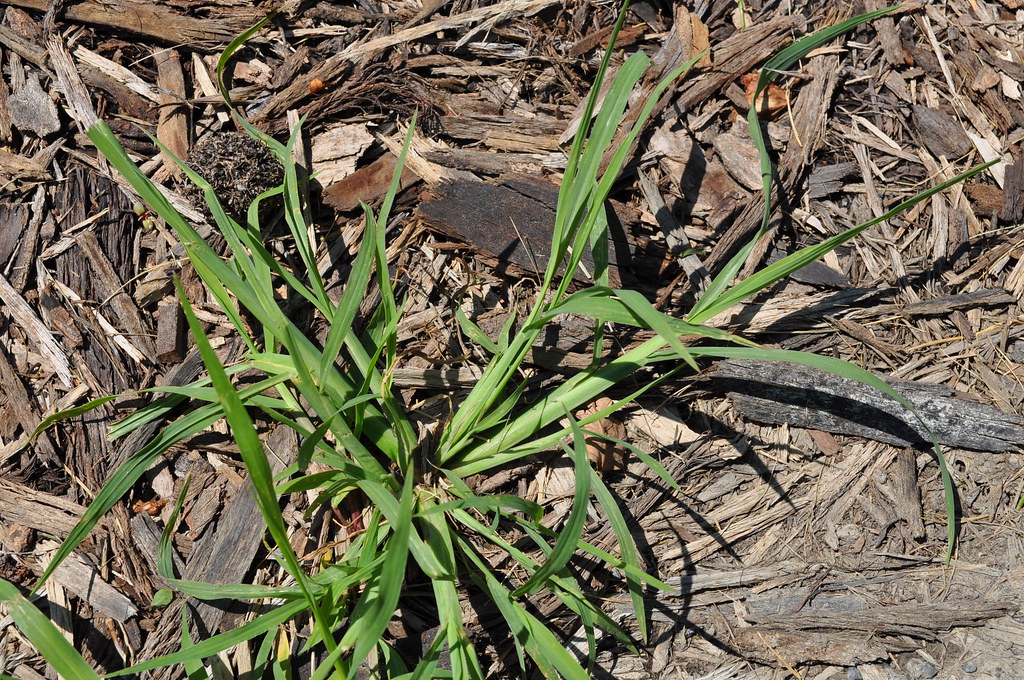
This is an annual weed with spreading, branching stems. It’s blue-green/purplish, coarse leaf blades may be hairy or smooth, depending on the variety. Flower heads with multiple finger-like spikes sprout from narrow stems.
You’re most likely to find crabgrass in underfed lawns, lawns trimmed below 2 inches, and lawns watered lightly and frequently. The best control method is deeply irrigated thick turf. Crabgrass should be dug before it produces seeds. Apply pre-emergence crabgrass herbicides in the spring before the temperature in the soil hits a consistent 60°F.
Dandelion
This is a perennial broadleaf characterized by bright-yellow flowers as well as a large, flat bunch of leaves emerging from a fleshy, long taproot. Dandelions thrive in thin turf.
Dig out or pull young dandelions before they produce seeds. Then cut off any regrowth from the remaining root pieces. Alternatively, you can spot-treat dandelion with a selective weed killer.
White Clover
This is a perennial broadleaf that was often added to grass seed mixtures. Also known as white Dutch clover, this weed is characterized by three-lobed leaves and a crescent-shaped white band. White clover flourishes in sparse, underfed turf with too much moisture, and spreads through creeping stems.
Control white clover by watering adequately, avoiding too much use of phosphorous, and applying nitrogen fertilizers. Spot-treat the broadleaf with a selective weed killer—it’s often recommended to repeat the treatment.
Ground Ivy
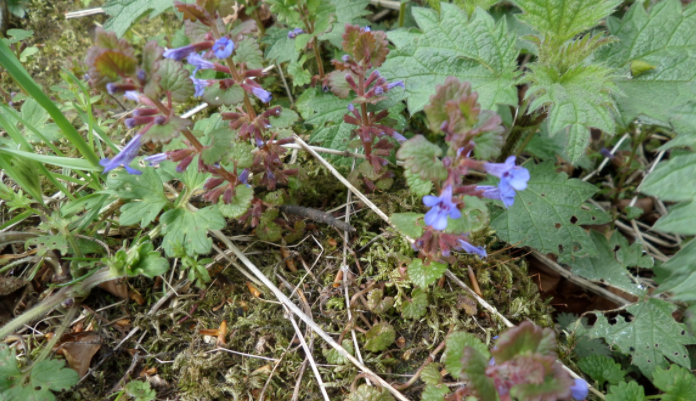
This is a perennial broadleaf with bright-green scalloped edge rounded leaves and square stems. It reproduces by creeping stems that form roots in the ground and by seed.
Also known as creeping Charlie, Ground Ivy prefers shade and damp soil. Waterless and improve drainage. Pull roots and stems of young weeds. Spot-treat with a post-emergence broadleaf herbicide.
Oxalis
This is a perennial broadleaf, although it might behave like an annual weed in some areas. Also called Yellow Woodsorrel, it has yellow flowers, each with 5 petals, and clover-like leaves. Plants spread by seed and roots.
This weed is hard to tame and thrives in thin turf that’s watered lightly and frequently. Fertilize properly and water thoroughly. Dig out young plants or spot-treat lone ones with a post-emergence herbicide. Keep new weeds at bay with an oxalis pre-emergence herbicide.
Quackgrass
This is a perennial grassy weed with blue-green to light-green leaves. It spreads through aggressive underground stems known as rhizomes and seeds.
Dig outpointed rhizomes and roots thoroughly as leftover pieces reproduce new plants. Spot-treat the plant with a nonselective herbicide.
Yellow Nutsedge
This a grass-like perennial with ¼ inch-wide leaves and triangular stems. Also known as yellow nutgrass, yellow nutsedge reproduces by tubers and seeds. Tubers often remain in the soil, which makes it hard to control established plants.
Cut high in early summer to midsummer. Water thoroughly but infrequently. Spot-treat with a post-emergence weed killer labeled for yellow nutsedge. Like most weeds, it’s easiest to control young plants.
Spotted Spurge
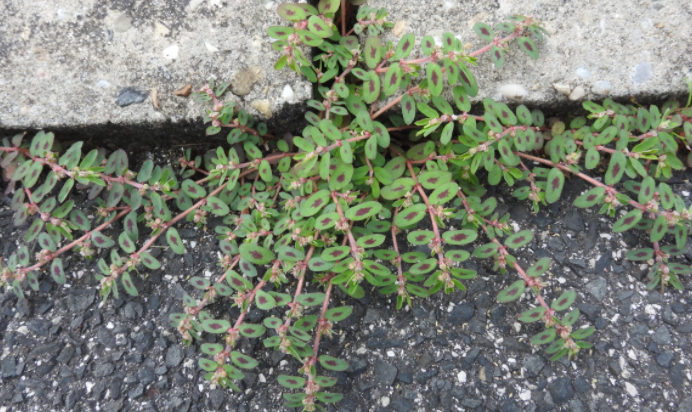
This is an annual broadleaf that grows in a quick-spreading mat near the ground. Its small green leaves have a reddish spot on top. A milky liquid comes out of cut stems.
Spotted spurge produces plenty of seeds. A vibrant, well-fertilized, and high-mowed lawn provides serious competition. Pull lone weeds before they produce seeds. Spot-treat plants with a post-emergence herbicide and use the right pre-emergence weed killers to deter new seeds.
Plantain
This is a perennial broadleaf that withstands a wide range of growing conditions, including low mowing heights, wet soil, dry soil, and heavy clay soil. Left unchecked, plantain might grow up to 2 feet tall and 12 inches wide.
Hand weeding is an effective natural way to remove plantain. Try to get rid of as much root system as you can. You might need to dampen the soil before pulling it out since it makes a deep taproot. And you might need to pull out the weed throughout the summer.
Spot-treat in early fall or early spring with a non-selective weed killer containing glyphosate. As this herbicide also harms turf, you’ll have to reseed it.
Common Ragweed
There are two ragweed varieties, both of which can torment allergy sufferers. But the type that attacks lawns is common ragweed.
Unlike other weeds on this list, common ragweed has no taproot, so it’s easy to weed; simply pull it out. Common ragweed does well in bad soil, so feed your lawn well and keep it healthy to deter the weed.
Ways to Eradicate Weeds from Your Lawn
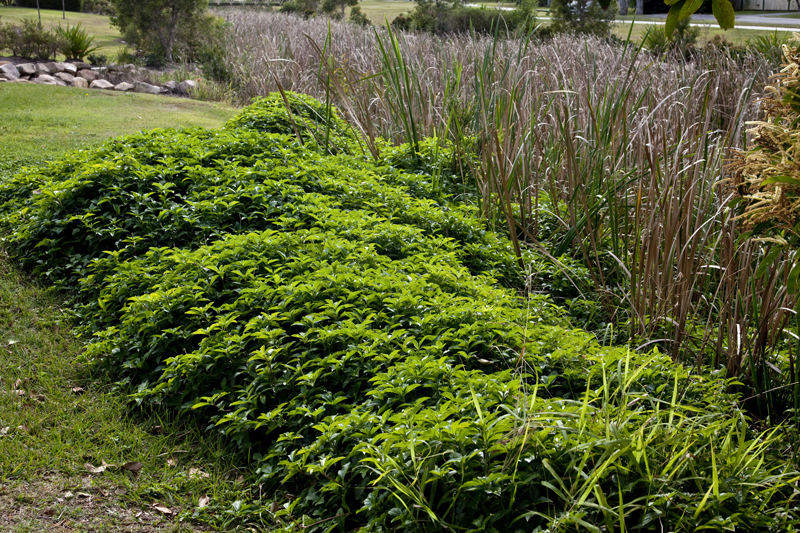
Getting rid of weeds take both time and patience to get the job successfully done. Pulling established dandelion roots out can cause a pulled muscle. Poison ivy keeps on fighting back. Sometimes you think you’re rid of this plant that makes calamine lotion so popular, but even dead weeds won’t go away without a fight.
Here are some of the best methods to eradicate common lawn weeds, or at least deter their growth.
- Pull weeds out: Some old-fashioned elbow grease won’t go amiss! Pulling weeds out is one of the easiest ways to eradicate them. Just grab them near the root and pull until you’ve got as much weed as possible. After pulling out the weeds, it’s recommended that you overseed your lawn to fill in the gaps and prevent weeds from growing back.
- Use cornmeal: If you notice weeds growing on your lawn, scatter cornmeal in the area. This will limit the nutrients available and prevent seeds from growing into weeds.
- Cover weeds in plant-based oils: Drenching weeds in plant-based oil is a very eco-friendly way of eliminating them. Moreover, this natural method won’t damage the soil they’re growing in. The plant-based oil will stop the weed’s photosynthesis process and cause its death shortly after.
- Pour hot salty water: Be sure to wear oven mitts before you do this. While many weeds flourish in direct sunlight, pouring boiling water on weeds will surely kill them. This method works a treat on your lawn edges, such as the separation from your dirt bed to the lawn or driveway to the lawn. Just pour the hot water on the weed-infested area and let the salt and heat cause them to dry and die out.
- Soak weeds in vinegar: If you have some white vinegar lying around, you can put it to good use. You’ll need to be cautious because vinegar is infamous for killing plants, so spray it only on the weeds and avoid damaging your lawn.
- Burn weeds down! This is probably the most exciting option! Buy a “weed torch” that’ll burn the weeds and destroy them so they can disappear for good. Simply hover over the undesirable plants until they start to wither and move on. You should never use this option near dry weeds or grass as you might start a fire!
- Dry weeds out with alcohol: Water is essential for plant survival, and alcohol gets water out of things (hi, hangover!). With some alcohol and water, you can douse or spray the weeds until they’re sufficiently drenched and then watch them die.
- Use baking soda: If your weed problem extends into your driveway or sidewalk, sprinkling baking soda in cracks and crevices will dry weeds out thanks to the high amount of sodium. Be careful with baking soda though—it can also kill your grass!
- Use bleach: What can’t trusty bleach do? Pour bleach into weed-infested areas. The chemicals contained in bleach can remove the shielding membrane of crabgrass, dandelions, and other weeds that grow in harsh conditions. Bleach can harm anything on contact, so keep it far away from your kids and pets.
- Chop off their tops: If you’re unable to remove the entire root, then be sure to cut off the accessible plant as much as possible. You mostly should get rid of the head to remove any seeds and stop them from growing back. Use any tool that lets you cut off as much weed as possible without spreading any seeds.
- Smother weeds: If weeds are intruding on your garden or lawn, they’ll grow upward and outward. To sort this out, you should smother the weeds with things like biodegradable clothing or newspaper sheets so they can’t dig through soil and cause problems.
- Block sunlight: Like other plants, weeds thrive in sunlight. Fortunately, you can easily cover your lawn with straw or mulch to obstruct sunlight. This lets your vegetation or grass grow without encouraging undesirable plants.
- Pour sugar on weeds: Yes, you heard that right! Adding some sugar to the roots of weeds will reduce the nitrogen that’s available to them, making them wilt.
- Spray citrus juice: Citric acids are effective at killing weeds by removing the protective membrane from their stems. Add citrus juice to some water and start spraying! Without the protective membrane, weeds will soon wither away in the sun.
- Make your own herbicide: You can make a homemade herbicide and spray it on any undesirable plants that come up. Mix dish soap, salt, and vinegar to make a solution that removes the weed’s protective membrane and causes it to dry out and die.
- Use herbicides: Don’t fancy making your own herbicide at home? Luckily, there are tons of herbicides on the market that you can apply to your lawn to get rid of weeds. It’s vital to pick the right herbicide, so make sure to consult a weed control expert. Some herbicides even get rid of weeds and nourish the grass you so desire. Shop around to find the right weed killer for your lawn.
How to Prevent Lawn Weeds
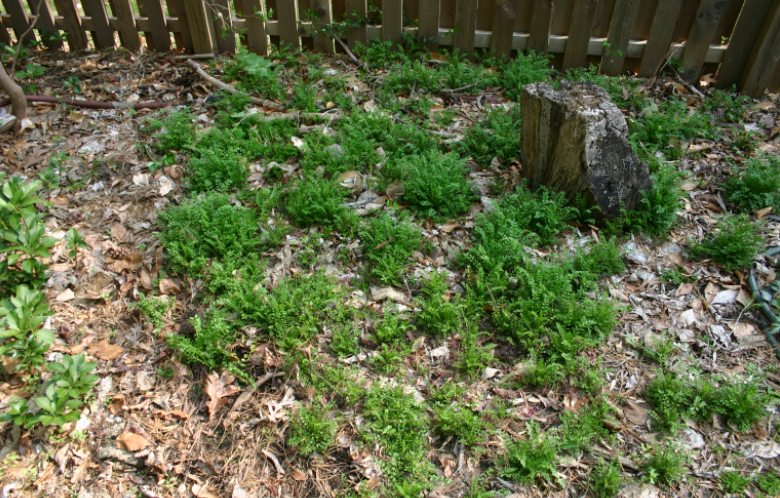
Keeping your lawn thriving and healthy is the best form of protection against weed attacks. Follow the steps below to keep weeds away from your lawn and make it healthier and stronger.
- Always mow according to grass growth rather than your calendar. Schedule your mowing in order to remove about a third of the height of the grass in one trim.
- Always mow your lawn at the recommended height, according to your type of grass. This will promote the healthy growth of roots and increase resistance to disease and pests.
- Supplement rainfall by watering your lawn whenever it’s necessary. Proper irrigation gives the average lawn about an inch of rainfall per week. This lets moisture go deeper and enhances deep, healthy root growth. Watering just once or twice a week is recommended, instead of more frequent watering.
- Keeping your lawn properly-fed every 6-8 weeks with a quality fertilizer as it grows helps it stay lush and thick, making it less hospitable to weeds by not giving them space to grow. Also, you can revitalize your lawn by dethatching or aerating as needed.
FAQs
Answer: An organic herbicide like corn gluten kills weeds and leaves grass intact. It stops certain weeds from developing roots. It helps stop crabgrass and other lawn weeds from growing. Horticultural white vinegar or acetic acid kills weeds fast and naturally. It kills only the part it touches, though.
Answer: To naturally get rid of weeds in your lawn, you can smother them with a sheet of newspaper to block sunlight. You can also pour boiling water on them to kill them, dry them out with alcohol, spray them with vinegar to kill them, apply corn gluten meal to the problem area, or apply a mixture of liquid dish soap and vinegar to dry them out.
Answer: Boil a solution of roughly two cups of water and one cup of salt. Pour the solution directly on the plants to eradicate them. Another effective method to kill weeds completely is to sprinkle salt directly on the unwanted grass or weeds that sprout between patio blocks or bricks.
Answer: If you have just a few crabgrass weeds in your lawn, spot-treat them with a weed killer such as Scotts®Lawn Spot Weed Control. This ready-to-use spray completely gets rid of all weeds listed, including crabgrass, without damaging your lawn if used as directed.
Conclusion
We all want a beautiful, well-maintained lawn. Even though you think you’re mowing, watering, and fertilizing your lawn properly, sometimes you have to look again to see if you’re doing it right based on what type of grass you have, your soil, and the environment your lawn is in.
Weed issues can be wearing and may feel utterly frustrating. However, with a little bit of hard work and lots of patience, you can eventually be rid of lawn weeds once and for all.

